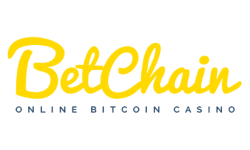Online betting has always been a popular and easy option to play from the comfort of your home or on the go, and with the rapid surge in crypto adoption, there is an influx of Bitcoin and cryptocurrency accepting casinos been created on a daily basis.
Cryptocurrency casinos provide customers with all of the same functions as a traditional in-person or online casino, but also with the extra security of privacy and the elimination of the necessity for bank account details.
These casinos don’t need access to personal financial information since they employ Bitcoin or other cryptocurrencies for transactions, which protects players from unwanted assaults as well unwanted snooping from banking institutions.
With so many crpyto online casinos to choose from, selecting the safest and greatest casinos that still give a fun gambling experience can be challenging. Which is why we carefully evaluated the best bitcoin casinos on our directory so that you can bypass the research and get right into playing.
So, here are the best crypto casinos to that you should undoubtedly consider joining first.
Best Bitcoin Casinos
Here are the best cryptocurrency casinos as by evaluated by our editorial team.
1️⃣ Roobet – Best Overall
2️⃣ 1xBit – Best for Sport betting
3️⃣ BitStarz – Award Winning Crypto Casino
4️⃣ Cloudbet – Best for User Experience
6️⃣ 7Bit Casino – Most Reputable Bitcoin Casino
Bitcoin Casinos Reviews
Roobet – Best Bitcoin Casino Overall

Looking for a unique and exciting online gambling experience? Look no further than Roobet.com! Roobet is one of the best bitcoin casinos overall.
This top-rated casino offers an incredible selection of games, including baccarat, roulette, dice, blackjack, and slots.
Plus, their cutting-edge sportsbook allows you to bet on your favorite teams and players. And if that wasn’t enough,Roobet.com also offers an amazing website design and user experience. Whether you’re a seasoned gambler or a novice, you’ll feel right at home on Roobet.com.
1xBit – Best Bitcoin Casino With Sports Betting

1xBit is one of the best bitcoin casinos overall. It is a bitcoin-focused online casino that offers a wide range of games, bonuses and promotions. They accept bitcoin and several other cryptocurrencies, and offer quick withdrawals and 24/7 customer support.
1xBit is one of the most reputable bitcoin casinos available, so be sure to check them out if you’re looking for a great gaming experience.
Currently 1xbit has a first deposit bonus of up to 7 BTC, which is a great way to get started with the casino. They also offer a wide range of other bonuses and promotions, so be sure to check them out if you’re looking for a great deal.
Fortune Jack – Best Bitcoin Casino Overall

Fortune Jack is a massively popular crypto casino and sportsbook, and one of the best bitcoin casinos online since 2014.
They are licensed in Curacao and offer withdrawals starting at 1 mBTC. There is no minimum deposit requirement, and new players can enjoy bonuses of up to 6 BTC plus 300 free spins.
Fortune Jack offers a wide variety of games from some of the world’s top software providers, and their customer support team is available 24/7 to help with any issues you may have.
Whether you’re looking to play slots, table games, or bet on sports, Fortune Jack is the perfect choice for all your online gambling needs.
Cloudbet – Best For User Experience

Cloudbet is one of the leading crypto casinos and sportsbook brands since 2013. Their user experience is great, and they are licenses from both Curacao and Montenegro.
They have a minimum withdraw of 0.1 mBTC and a minimum deposit of 1 mBTC. Plus, they offer up to 5 BTC + 200 Free Spins as a bonus. So if you’re looking for a great online gambling experience, look no further than Cloudbet!
Bitstarz – Multi-award Winning Crypto Casino

BitStarz is an award winning online casino and one of the best bitcoin casinos overall.
It is an online casino where players can enjoy a wide range of slots, table games and live dealer games.
The site was launched in 2014 and is licensed by the Curacao eGaming Authority.
Players can make deposits from as little as $20 and they will be eligible for a 100% matching bonus up to $100. There are also 180 free spins up for grabs.
The customer support team at BitStarz is available 24/7 to help with any queries or issues you may have. Withdrawals are processed within one to three days. Overall, BitStarz is a great choice for online casino gaming.
7Bit Casino – Most Reputable Bitcoin Casino

7Bit Casino is one of the oldest and best bitcoin casinos operating since 2014. The casino is licensed by Curacao and offers new users a 100% matching bonus on their first deposit, as well as 100 free spins. 7Bit Casino prides itself on its fast withdrawals and excellent customer service.
The casino offers a wide variety of games for its users, including slots, table games, and more. There is something for everyone at 7Bit Casino. In addition, the casino offers generous bonuses and promotions to keep its players coming back for more. Overall, 7Bit Casino is a great choice for those looking for an online gaming experience.
BitcoinCasino.io – Best Bitcoin Casino For The Graphics

BitcoinCasino.io is one of the best bitcoin casinos with the most cool graphics. It is a Bitcoin-based online casino that was launched in 2019.
It is licensed by the Curacao gaming authority, and it offers a wide range of casino games, including slots, blackjack, roulette, and baccarat.
The minimum deposit amount is 0.0001 BTC, and the minimum withdrawal amount is 0.01 BTC. The casino has a 24/7 live chat support service, and its withdrawals are processed very quickly.
BetChain – Best Bitcoin Casino That Accept Both Crypto And Fiat

BetChain is one of the best crypto casinos that is online since 2013. It is best known for being an hybrid casino. It accepts both Crypto and Fiat currencies.
The site has over 2,500 games, making it one of the go-to casinos for casino players looking for a wide variety of games to play.
The casino has a Curacao license, and min withdraw amount is only 1 mBTC. Additionally, min deposit amount is 0.01 mBTC, and the bonus for new users is up to 1 BTC deposit bonus and 200 Free Spins.
Finally, it characterized by its outstanding customer support and swift processing times of players withdrawals. All of these factors make BetChain a great choice for online gamblers.
KatsuBet – Best New Entry

KatsuBet is a new online casino launched in 2020 by the company behind 7Bit casino. It was formerly known as Mars Casino and it was one of the best bitcoin casinos ever existed.
It is licensed in Curacao and offers a huge selection of games. In fact it offer over 5000 games for players to choose from.
The minimum deposit amount is $20 and the minimum withdrawal amount is also $20. New users can receive up to 5 BTC deposit bonus and 100 Free Spins.
Stake – Best For The Wide Selection of Games

Looking for a top-quality crypto casino and sportsbook? Look no further than Stake.com! One of the best bitcoin casinos that has been online since 2017 and it has made a name of itself due to its unparalleled user experience.
The casino holds a Curacao License. This bitcoin casino is characterized by fast deposits and withdrawals and they offer a 10% cashback to all new players as a bonus.
Plus, this casino has no minimum withdrawals or deposits – which is a big plus for players who want to simply wet their legs or start their gambling career with less money.
BC Game – Best Bitcoin Casino With 24/7 Support

bc.game is a bitcoin casino that’s been online since 2017 and it has become a favorite among casino players.
The casino holds a Curacao license , which is one of the most popular licenses among online casinos.
One of the things that casino players like about bc.game is that customer support is open 24/7. Another thing that they like is the fact that there’s no minimum deposit amount, so you can start playing with whatever amount you’re comfortable with and the minimum withdrawal amount at bc.game is 0.002 BTC – which is very low compared to other casinos.
The bonus at bc.game is also attractive, as you can get up to 180% on your initial deposit. And finally, the site offers fast deposits and withdrawals, which is always a plus.
All in all, bc.game is a great option for casino players who are looking for a reliable and user-friendly site.
Bitcoin Penguin – Best Bitcoin Casino Licensed in Costa Rica

Bitcoin Penguin is an online casino that has been operational since 2014. It is licensed in Costa Rica and offers a minimum withdrawal amount of 5 BTC and a minimum deposit amount of 0.1 BTC.
New users can receive up to 100% of their new deposits in bonuses, as well as free spins up to 0.1 Bitcoin.
The casino offers a wide range of games, including slots, table games, and video poker. There is something for everyone at Bitcoin Penguin. The site is user-friendly and offers a great experience for all players.
Players love it because it offers instant cashouts and live chat support. The customer service team is always available to help with any questions or issues you may have. Bitcoin Penguin is the perfect place to go for a fun and exciting gambling experience.
BitCasino – Best Bitcoin Casino For Poker

BitCasino.io is a leader in the cryptocurrency gambling industry, with great 24/7 customer support and a long history dating back to 2014. It one of the best bitcoin casinos for poker lovers.
The casino is licensed in Curacao and offers fast withdrawals with a minimum of just 2 mBTC.
New users can enjoy a welcome bonus of 200 free spins and 10% cashback on their first deposit.
BitCasino is known for its fast withdrawals and outstanding customer service, making it a great choice for any online gambler.
😁 BONUS: FreeBitcoin – Best Bitcoin Casino And Faucet

Freebitco.in is a bitcoin faucet and one of the best bitcoin casinos online that offers players the chance to earn free bitcoins, as well as play a variety of casino games. The site has been operating since 2013 and has paid out over $30 million in prizes to its users.
Currently freebitco.in has over 4 million registered users from all over the world. The site is free to use and also offers a variety of other features such as a lottery, weekly jackpots, and an interest-earning savings account.
How do we rate online casinos?
Being players or so long, we’ve developed a system for analyzing, reviewing, and ranking casinos based on a variety of criteria. We’ve all learned to be skeptical with what online casinos claim and what they can genuinely offer.
This is why, before researching and assessing any casino listed on our website, we join up, deposit, and play there anonymously.
We can accurately simulate the experience our readers can have while joining up by remaining anonymous throughout the process.
When we analyze casinos, we consider the following factors:
Security, licensing and provably fair
Although crypto casinos are typically considered to be more safe and more secure than traditional casinos, this does not imply that all crypto online casinos are secure and safe.
A website must have the appropriate security measures and permits in place to be regarded reliable and trustworthy. Gaming regulators like as the MGA, UKGC, Curacao, and others provide these licenses.
Licensed sites are known for maintaining a much higher level than other casino’s in terms of being provably fair, management of personal information, provide fair and legitimate bonuses, and everything else that makes an online casino website reliable and respected.
We thoroughly examine each crypto casino’s license to ensure that it is authentic and verifiable.
We also ensure that the websites are secure, using SSL 128-bit encryption to safeguard your personal information, a secure payment mechanism, and extra security features like two-step verification.
Cryptocurrencies accepted
It may seem apparent, but the bitcoin casinos on this list must accept a diverse range of altcoins. While the majority of users prefer using popular cryptocurrencies like Bitcoin, we never aim to confine gamers to them. To be classified as a “crypto casino,” each casino must accept at least three cryptocurrencies.
Bitcoin, Ethereum, Bitcoin Cash, and Litecoin are the most popular cryptocurrencies supported by the websites on this list. As additional cryptos emerge and gain popularity, the number of cryptos required for a site to be designated a crypto casino will rise.
Bonuses & promotions
There’s no denying that casino bonuses and promotions attract a large number of gamblers. It’s a terrific opportunity to get a jumpstart and play for bigger stakes than you normally would, or just to prolong your gambling experience by having a bigger budget. We recognize that when it comes to bonuses and promotions, Bitcoin casinos are held to higher standards than traditional casinos, therefore we ensure that almost all of the crypto casinos on this article provide a considerable bonus for new players.
Advantages of crypto & bitcoin gambling
Online casinos are subjected to new regulations all the time, making payment processing a highly regulated procedure. Cryptos are here to help in this situation.
In a nutshell, cryptocurrency offer an alternative to using fiat cash to make payments on casino sites. But that isn’t the only benefit of cryptocurrency and blockchain technology.
We have to mention though that if for any reason the government wants to snoop on your transactions they can find out. It is not that easy as walking though a bank. To be 100% safe from the government you need to use privacy coins for your transactions such as Monero.
Disadvantages of crypto & bitcoin gambling
When there are benefits, there are also drawbacks, like with everything else. Even though there are multiple advantages to doing so, some people are turned off by the notion of trying something new. Here are a few things to consider if you’re contemplating dabbling with cryptocurrencies to give you the whole picture so you can make your own decision.
When you play in BTC at a Bitcoin casino, the price fluctuation only impacts you when you convert your coins to fiat money. If the website you’re gambling on changes your coins into fiat money, the value of your bitcoins may be lost.
Of course you can always transact with stablecoins that are pegged to the USD – if you want to avoid price fluctuations.
How to choose a crypto/bitcoin casino?
Our team of specialists has scoured the internet for the finest cryptocurrency casinos. O bviously, your choice of cryptocurrency online casino is based on your individual tastes. To assist you in finding the best bitcoin casino for you, our reviews offer information on each of the following criteria.
How To Stay Safe Online
Being secure while playing at an online casino that takes cryptocurrencies is certainly one of the most important considerations when it comes to anything involving personal or financial information. Fortunately, using cryptocurrencies like Bitcoin to bet online is one of the safest options.
One of the key reasons why Bitcoin and cryptocurrencies in general have become so popular is its transaction security. An individual would need your login data, including two-step verification, to access the funds in your crypto wallet. That is only one of the many reasons why cryptocurrency hacking is incredibly tough.
Here are some tips to amplify your online security when dealing with cryptocurrency casinos:
Fortunately for you, we’ve done the research for you and compiled a list of the most reputable cryptocurrency casinos. You can always check a site’s reputation by going to review website like TrustPilot.
A strong password includes, small case letters, big case letters, symbols, numbers and are at least 8 characters long.
Most reputable cryptocurrency casinos will offer 2FA as an option, so be sure to enable it if possible.
Outdated software often has security holes that can be exploited by hackers. By keeping your software up to date, you can close these holes and keep your computer safe.
There are many reputable VPN providers out there, so be sure to do your research and choose one that’s right for you.
Phishing scams are becoming increasingly sophisticated, so it’s important to be vigilant when dealing with any online communication. If something looks suspicious, don’t click on any links and report it to the company immediately.
Also, make sure you bookmark your favourite online casino website for easy and secure access.
Only use exchanges that have a good reputation and are well-established. Be sure to do your research and choose an exchange that’s right for you. Here’s a list of trusted crypto exchanges you can use
They store your private keys offline, so even if your computer is hacked, your coins will be safe.
Some popular hardware wallets include the Trezor and Ledger Nano S.
These are just some of the ways you can keep your online activity safe when dealing with cryptocurrency casinos. Be sure to follow these tips to protect yourself from scams and fraudsters.
Final Take
Make sure to join one of the recommended bitcoin casinos above – if you want to avoid any hurdles in the future. These crypto casinos are the best or the best and handpicked by our editorial team.
Also, when it comes to gambling with Bitcoin, there are a few things you need to keep in mind in order to stay safe.
First and foremost, only gamble with reputable casinos. There are many scams out there, so be sure to do your research before depositing any funds. Secondly, use strong passwords and enable two-factor authentication if possible.
This will add an extra layer of security to your account.
Finally, keep your software up to date and use a VPN for added protection. By following these tips, you can stay safe and enjoy gambling with Bitcoin.
If you find our guide useful feel free to share it with your friends and family. Also, don’t forget to bookmark our site for easy and secure access.
Read Also
10 Best Crypto Audiobooks You Don’t Want to Miss
5 Best Crypto Jobs Sites To Land Your Next Six Figure Job
Best Cryptocurrency Books For Beginners: 8 Easy To Understand Books To Master The Crypto Space
How to Make Money With Cryptocurrency
Top 10 Best Crypto Advertising Networks
Previous Articles:
- Here’s What We Know So Far About Revolut’s Native Crypto Token
- The 3 Best Play to Earn Games
- NovoBrokers Review: The Platform With The Most Beneficial Features
- Get Ready For NFTs On Spotify
- Russia May Legalize Cryptocurrencies As A Means Of Payment

